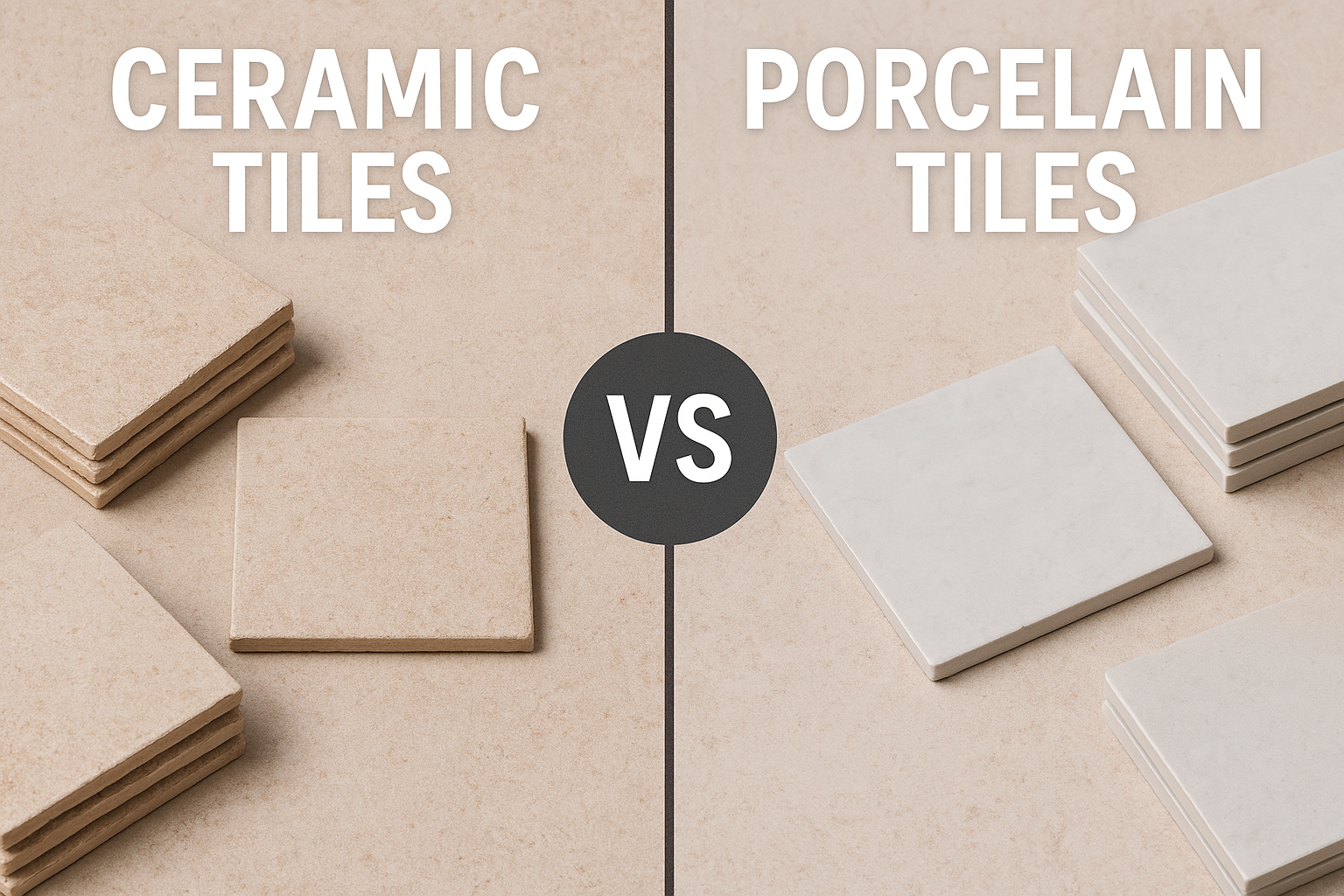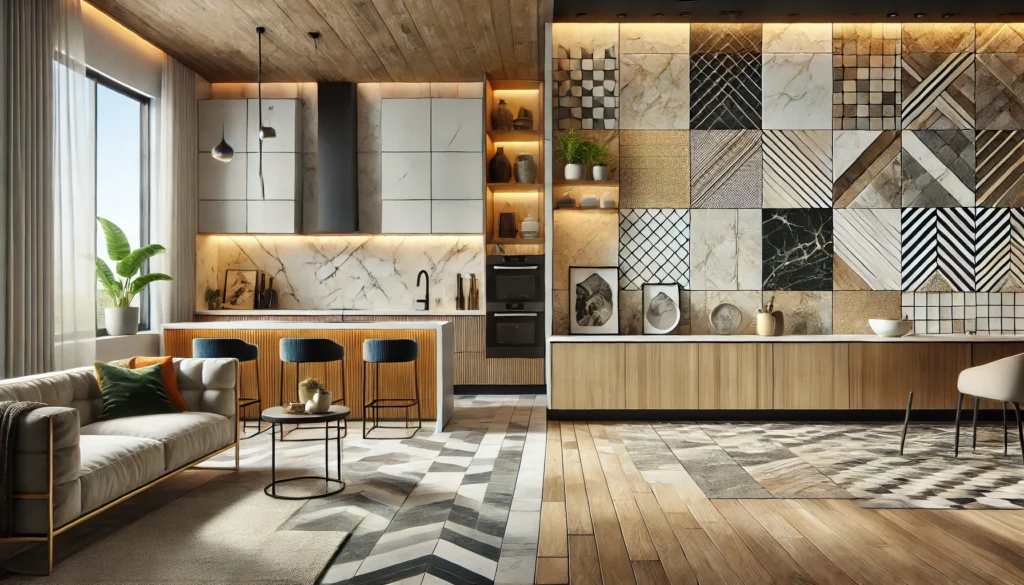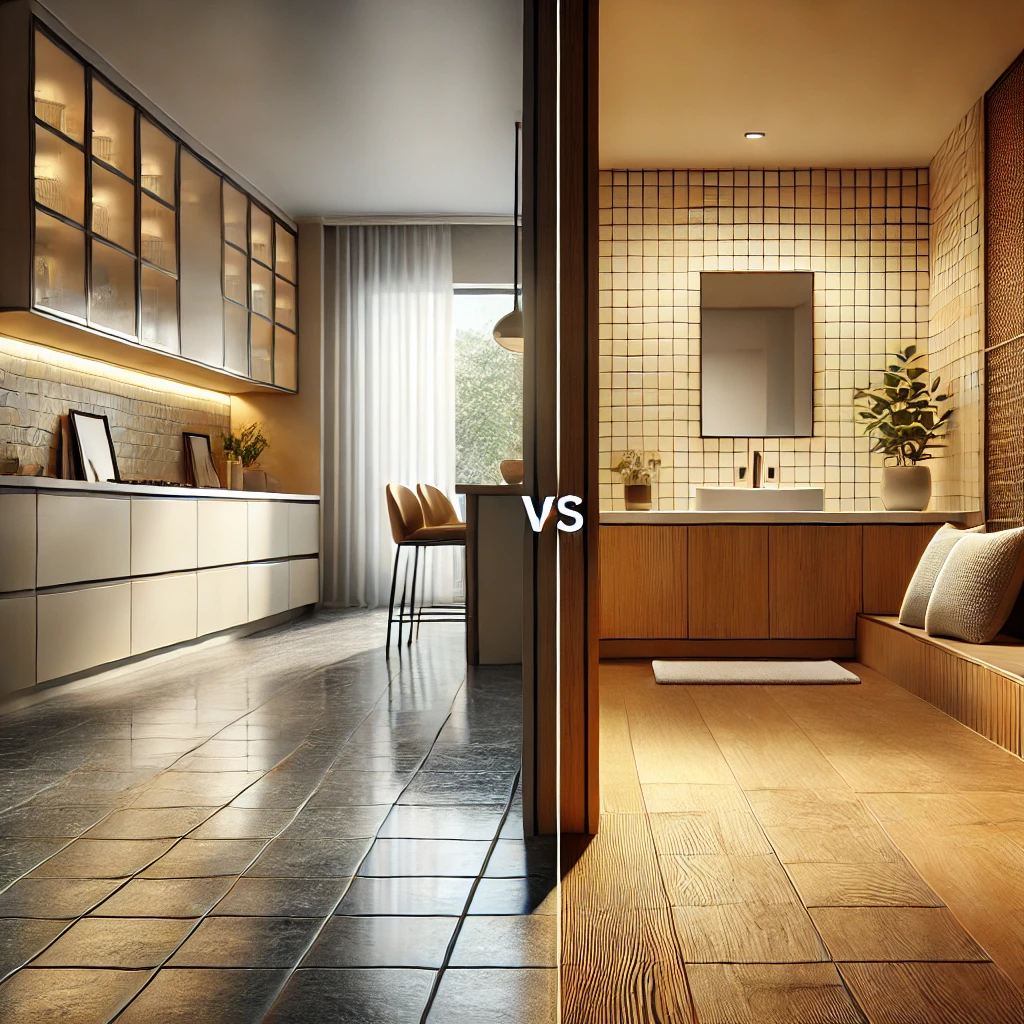Have you ever stood in a tile showroom, surrounded by endless options, wondering which one’s right for your project? Tiles aren’t just functional—they’re the backbone of your space’s style and durability. With so many types of tiles out there, from glossy glass to rugged natural stone, it’s easy to feel overwhelmed. But don’t worry—I’ve got you covered. In this guide, we’re exploring 10 types of tiles you need to know, with a spotlight on the classic showdown: ceramic tiles vs. porcelain tiles. Whether you’re revamping your kitchen, designing a bathroom, or just curious, you’ll walk away with the know-how to pick the perfect tile.
Let’s break it down step-by-step, tackling the confusion, offering solutions, and throwing in some pro tips to make your tile journey a breeze.
Introduction to Tiles
Tiles have been around forever—think ancient mosaics in Rome or colorful patterns in Moroccan riads. Today, they’re everywhere: floors, walls, backsplashes, even outdoor patios. But here’s the kicker: not all tiles are created equal. Choosing the right one can transform your space—or leave you with cracked floors and a drained budget. So, what makes tiles so special, and why should you care about the difference between ceramic tiles and porcelain tiles? Let’s start with the basics.
What Are Tiles, Anyway?
Tiles are thin, flat pieces of material—usually clay, stone, or glass—designed to cover surfaces. They’re fired, shaped, and sometimes glazed to create durable, beautiful finishes. Picture them as the skin of your home: they protect, they decorate, and they endure. From the sleek shine of glass tiles to the earthy vibe of terracotta, each type has a personality.
Why Picking the Right Tile Matters
Ever slipped on a wet floor or watched a cheap tile chip after a month? That’s what happens when you choose wrong. The right tile saves you time, money, and headaches. It’s about matching durability to traffic, style to vibe, and budget to reality. Ready to meet the contenders? Let’s dive into the 10 types of tiles you need on your radar.
The Problem: Too Many Tile Choices, Too Little Clarity
Here’s the rub: with so many types of tiles, how do you know which one fits your needs? Are ceramic tiles tough enough for a busy kitchen? Do porcelain tiles justify their price tag? And what about all those other options—mosaic, natural stone, metal—are they worth considering? The overwhelm is real, and picking the wrong tile can lead to costly mistakes. Let’s solve that confusion by breaking down the top 10 tile types, starting with the big two.
Solutions: The 10 Types of Tiles You Need to Know
Ceramic Tiles
What Makes Them Tick?
Ceramic tiles are the everyday heroes of the tile world. Made from clay, water, and minerals, they’re shaped and fired at around 1,000-1,250°C. Glazed or unglazed, they’re versatile and budget-friendly, with a knack for bold colors and patterns.
Where Do They Shine?
You’ll spot ceramic tiles in kitchens, bathrooms, and living rooms. They’re perfect for backsplashes or accent walls—anywhere you want style without breaking the bank.
The Upsides
- Affordable: A go-to for tight budgets.
- Variety: Endless colors, shapes, and finishes.
- DIY-Friendly: Easy to cut and install.
- Low Maintenance: A quick wipe keeps them gleaming.
The Downsides
- Durability: Not as tough as some alternatives—prone to chips.
- Wear: Glazed surfaces fade in heavy traffic.
- Moisture: Higher water absorption than porcelain.
Porcelain Tiles
What Sets Them Apart?
Porcelain tiles are ceramic’s tougher cousin. Made from finer clay and fired at 1,200-1,400°C, they’re denser and less porous. Glazed or unglazed, they mimic everything from wood to marble.
Where Do They Work Best?
Think high-traffic zones: entryways, patios, bathrooms, even commercial spaces. Porcelain tiles handle wear like champs.
The Upsides
- Tough as Nails: Resists cracks and scratches.
- Waterproof: Less than 0.5% water absorption—ideal for wet areas.
- Versatile Looks: Mimics stone, wood, or concrete.
- Low Fuss: Minimal upkeep required.
The Downsides
- Pricey: Higher cost than ceramic.
- Heavy: May need pro installation.
- Slippery: Unglazed versions can be slick when wet.
Other Tile Types to Explore
Not sold on ceramic or porcelain? Here’s a quick rundown of eight more types of tiles worth knowing:
Glass Tiles
- Vibe: Shiny, light-reflecting elegance.
- Use: Backsplashes, shower walls, pools.
- Pros: Stunning visuals.
- Cons: Scratches easily.
Natural Stone Tiles
- Vibe: Luxe, organic (marble, granite, slate).
- Use: Floors, walls, outdoor spaces.
- Pros: Timeless beauty.
- Cons: Pricey, needs sealing.
Mosaic Tiles
- Vibe: Tiny, artistic patterns.
- Use: Feature walls, bathroom floors.
- Pros: Creative freedom.
- Cons: Grout-heavy upkeep.
Quarry Tiles
- Vibe: Rustic, unglazed clay.
- Use: Outdoor patios, kitchens.
- Pros: Slip-resistant.
- Cons: Limited colors.
Terracotta Tiles
- Vibe: Warm, earthy charm.
- Use: Mediterranean-style floors.
- Pros: Cozy aesthetic.
- Cons: Stains without sealing.
Cement Tiles
- Vibe: Bold, handcrafted patterns.
- Use: Indoor/outdoor floors.
- Pros: Durable, unique.
- Cons: Needs sealing.
Metal Tiles
- Vibe: Sleek, industrial edge.
- Use: Accent walls, backsplashes.
- Pros: Modern flair.
- Cons: Can dent.
Resin Tiles
- Vibe: Lightweight, budget-friendly.
- Use: DIY projects, temporary fixes.
- Pros: Easy install.
- Cons: Less durable.
Ceramic Tiles vs. Porcelain Tiles: The Showdown
Confused about ceramic tiles vs. porcelain tiles? Let’s settle the score with a head-to-head comparison.
How They’re Made
- Ceramic: Basic clay mix, fired at lower temps. Simple and effective.
- Porcelain: Finer clay, higher heat, denser result. Built to last.
Durability
- Ceramic: Solid for light use, but chips under pressure.
- Porcelain: A tank—perfect for heavy foot traffic.
Water Resistance
- Ceramic: 3-7% absorption. Okay for dry spots, tricky in wet ones.
- Porcelain: Under 0.5% absorption. Wet-area superstar.
Cost
- Ceramic: Wallet-friendly—starts at $1-$5 per square foot.
- Porcelain: Pricier—$3-$10+ per square foot, but worth it long-term.
Installation
- Ceramic: Lighter, easier to cut. DIY heaven.
- Porcelain: Dense, tough to cut. Pros often recommended.
Maintenance
- Ceramic: Glazed versions wipe clean; unglazed need care.
- Porcelain: Low effort across the board.
Looks
- Ceramic: Bright, playful designs.
- Porcelain: Sophisticated, natural mimics.
Verdict: Ceramic tiles win for budget and ease; porcelain tiles take the crown for durability and wet spaces.
Examples: Tiles in Action
Case Study: Cozy Kitchen Revamp
A family chose porcelain tiles mimicking oak for their kitchen. Why? With kids and pets, they needed durability—and the wood look warmed up the space. Five years in, it’s still flawless.
Case Study: Chic Office Lobby
A startup went with large ceramic tiles in matte gray. The goal? Sleek style on a budget. Easy cleaning kept it sharp for clients, proving ceramic’s versatility.
How to Choose the Right Tile
Lost in tile limbo? Here’s your checklist:
Key Factors
- Location: Indoor cozy or outdoor rugged?
- Traffic: Busy hallway or quiet bedroom?
- Budget: Splurge or save?
- Style: Bold patterns or subtle neutrals?
Quick Decision Guide
- Bathroom: Porcelain (waterproof).
- Kitchen Backsplash: Ceramic or glass (style-driven).
- Patio: Quarry or natural stone (weatherproof).
Tile Installation Made Simple
Prep the Surface
Clean, level, dry—your foundation matters.
Lay ‘Em Down
Start center-out, use spacers for neat lines.
Grout Like a Pro
Pick a matching shade, wipe excess fast.
Seal the Deal
Protect porous tiles with sealant.
Tile Maintenance Hacks
- Clean: Mild soap, soft cloth—done.
- Protect: Rugs in busy spots.
- Fix: Swap cracked tiles with spares.
Advanced Tips for Tile Mastery
Go Green
Opt for recycled cement tiles—sustainable and stylish.
Trend Alert
Large-format porcelain tiles are hot—fewer grout lines, big impact.
Tech Boost
Digital printing on ceramic tiles nails intricate designs.
Conclusion: Your Tile Adventure Starts Here
From ceramic tiles to porcelain tiles and beyond, the right choice blends beauty, function, and budget. Need affordability and flair? Ceramic’s your friend. Craving durability for a wet, wild space? Porcelain’s got your back. With these 10 types of tiles in your toolkit, you’re ready to transform any room.
Ready to tile? Browse our collection or chat with a pro to kickstart your project today!
FAQs
- What’s the real difference between ceramic and porcelain tiles?
Porcelain’s denser and less porous thanks to higher firing temps—great for durability and wet areas. Ceramic’s lighter and cheaper, perfect for simpler jobs. - Can ceramic tiles handle a steamy bathroom?
Yes, if glazed and sealed—otherwise, porcelain’s safer for moisture. - Why are porcelain tiles pricier?
Finer materials and intense manufacturing bump up the cost, but you get longevity in return. - How do I keep tiles sparkling?
Warm water, mild detergent, and a soft mop—skip the harsh stuff. - Is tile installation a DIY job?
Small ceramic projects? Sure. Big porcelain layouts? Call a pro for precision.



